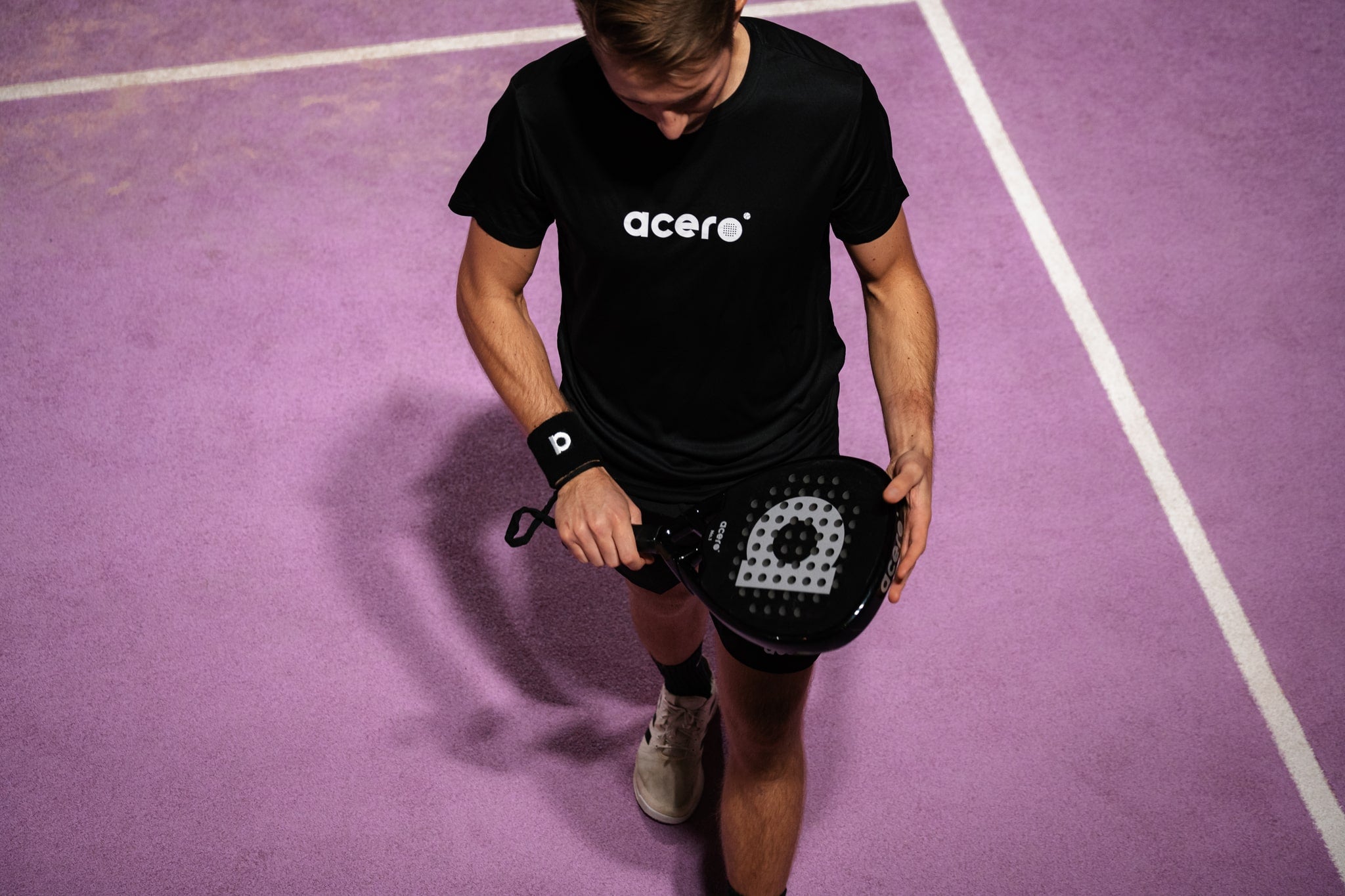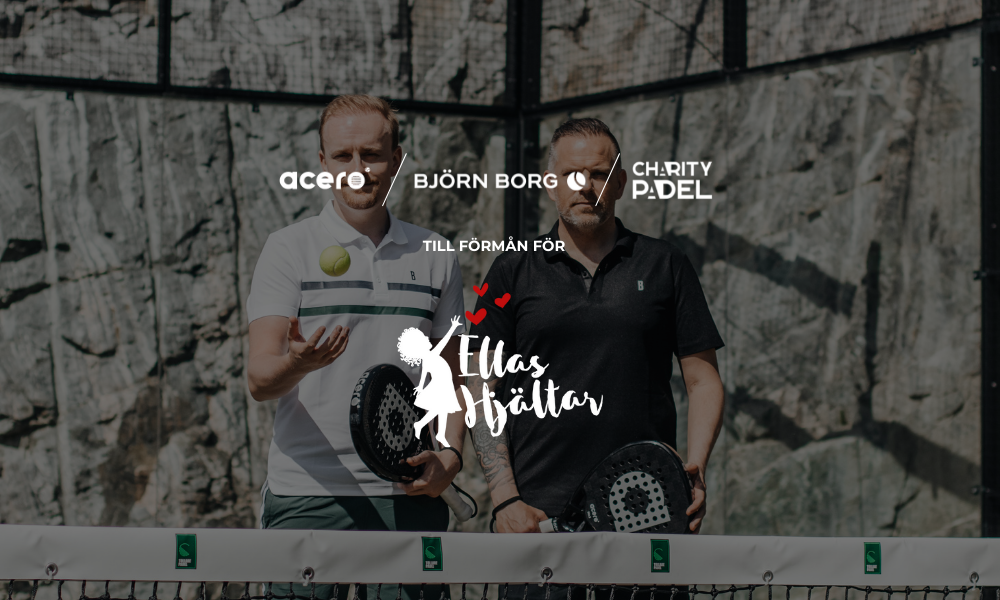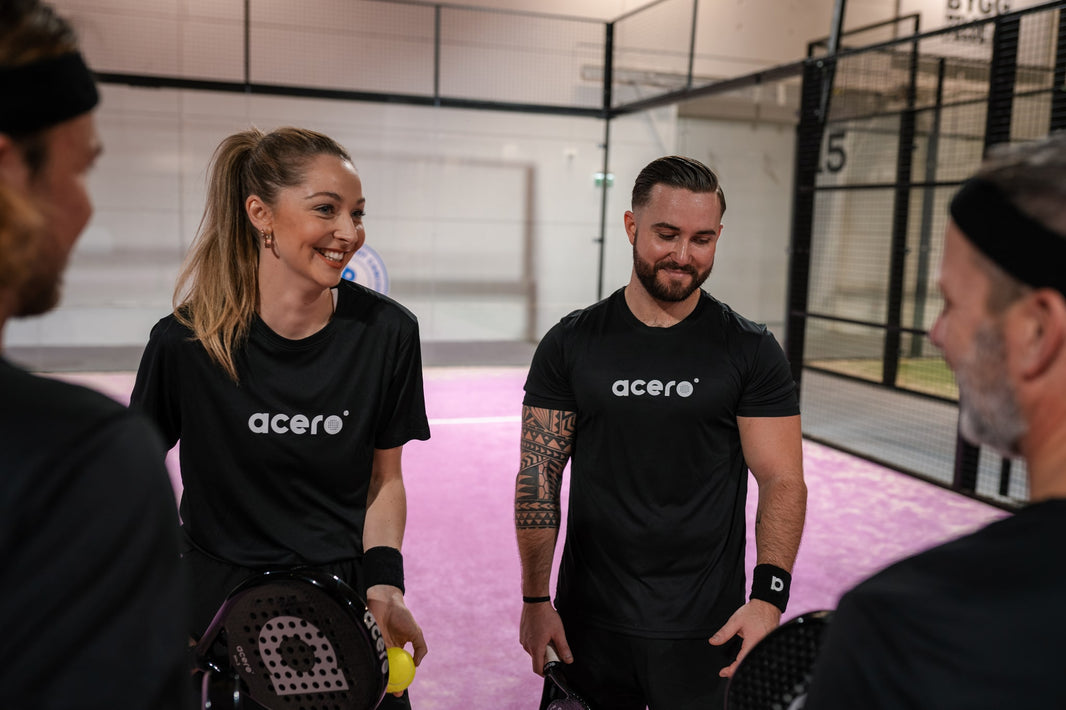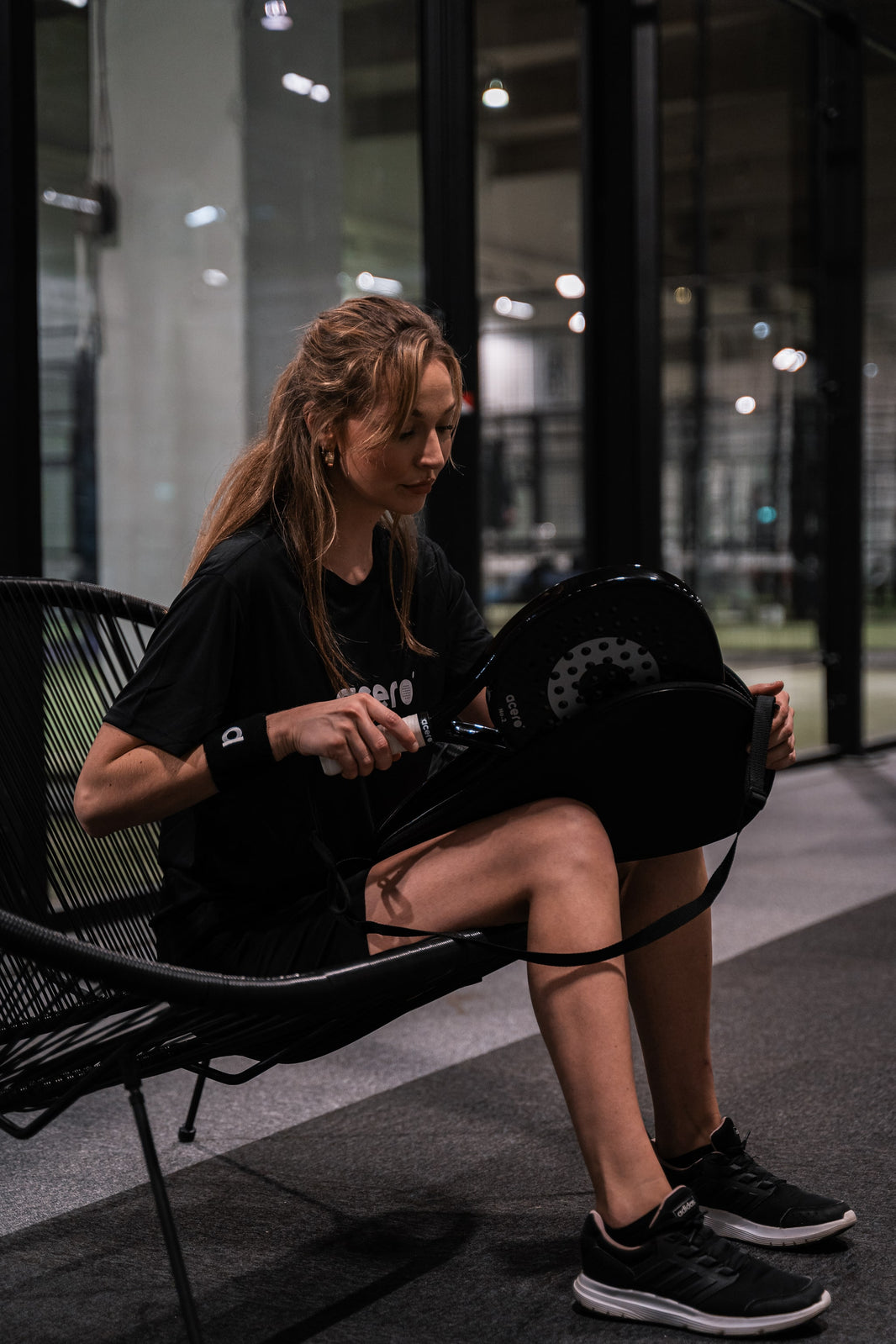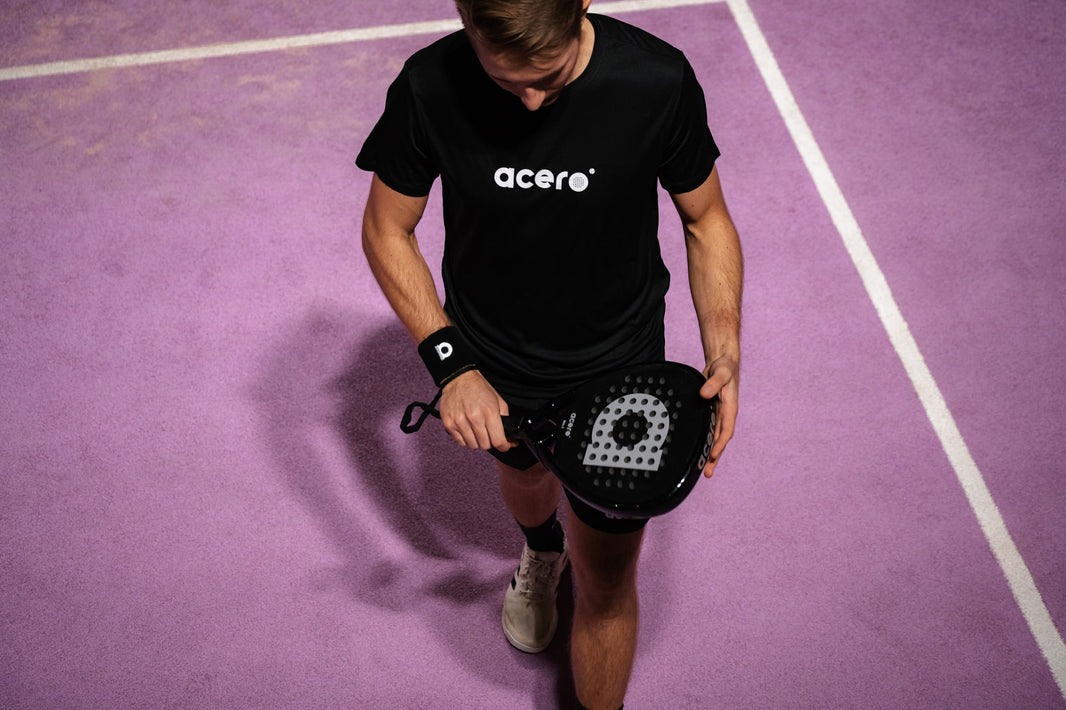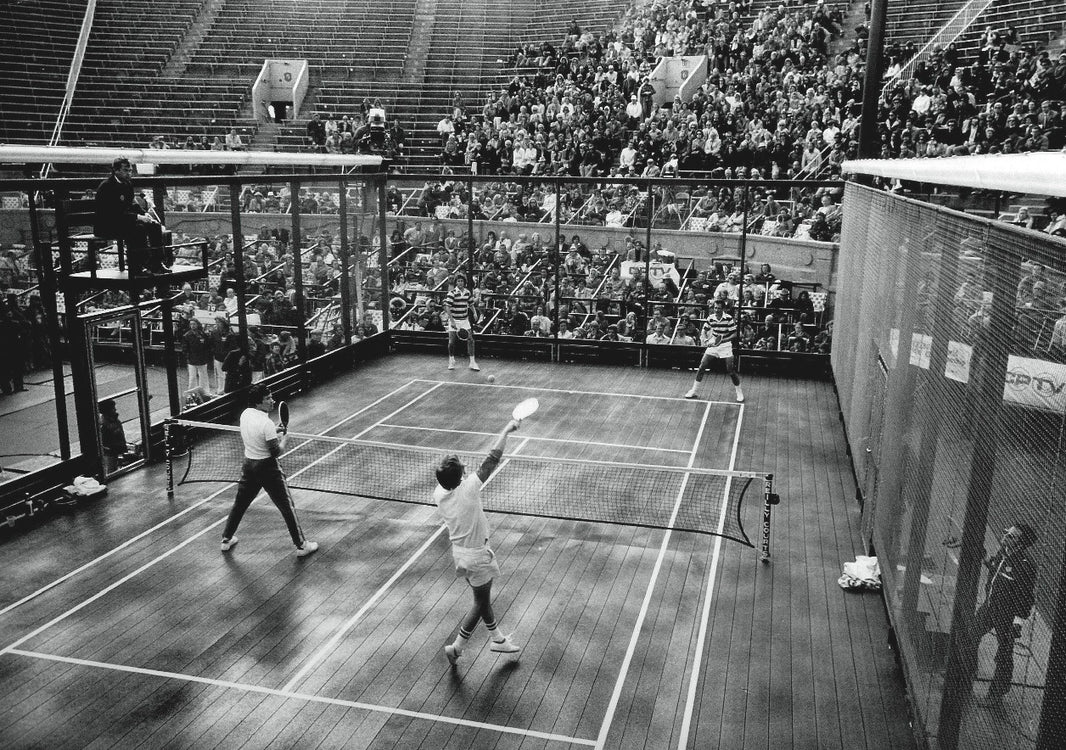Choosing a padel racket can be difficult. Believe us, we know - that's why Acero exists. It can be compared to the tough choices you have to make in a candy store. Do I want sweet, sour or salty? Am I prepared to get sticky to enjoy a praline for a split second or do I want to spread my luck and go for caramels? Is two hectos enough or can I handle a kilo? In order to make the right decision, you need to reflect on your playing style, level and other conditions that can affect your game. In this complete guide, we explain all the concepts, differences and aspects you need to understand to make a good buying decision.
As in all racket sports, it is important to play with a padel racket that suits your level, playing style and other conditions. The racket is your best friend that will strengthen your game and give you confidence on the court. Playing with the wrong racket will not only lead to a worse presentation on the court, it can also cause injuries.
A padel racket is like a recipe, where the ingredients are:
- The shape
- The balance
- The core
- The material
- The weight
Shape of the racket
Padel rackets are generally produced in three different shapes; round, drop and diamond. The shape of the hitting surface has a great impact on the feel of the racket and each has its own characteristics, advantages and disadvantages.
Round racket
With a balance closer to the handle, round padel rackets are generally easier to maneuver. The centered and round sweetspot is forgiving and provides more control than power. A racket with a round shape is usually a good choice for beginners and recreational players.
Diamond-shaped racket
On diamond shaped rackets we find the sweetspot a little higher up which makes the racket more front-heavy, generating more power but less control in the strokes. This shape is considered more demanding and requires the player to be in control of the situation himself. Therefore, it often suits the advanced and attack-oriented player who likes to go to the net.
Drop-shaped racket
A hybrid of the above-mentioned shapes, the teardrop shape is a balanced variation between round and diamond. The centered sweetspot offers a perfect combination of power and control. It is slightly more playable than the diamond-shaped rackets but offers a bit more speed than the round ones. Often appreciated by the advanced exerciser who can vary their game between defensive and offensive.

The balance of the racket
The balance often goes hand in hand with the shape of the racket and largely affects how your racket feels in play. There are three main categories; low balance, medium balance and high balance.
Low balance
A low balance racket is more maneuverable and comfortable to play with, and suits the player looking for control in their game. The disadvantage is that they do not generate the same power on offensive shots. Low balance rackets are more gentle to play with, which can help avoid injuries.
Medium balance
For the versatile player looking for a good balance between power and control in their strokes.
High balance
Often generates more power but at the expense of reduced control. Places higher demands on the player's own technique and safer ball hit. If you are prone to injury, you should be careful to choose a padel racket with high balance because of the higher demands placed on you as a player.
The core of the racket
The core of a padel racket is either a foam or rubber material (FOAM/EVA). The most common material on the market's most popular shovels is EVA, which is an Eten vinyl acetate rubber that is very resistant to shocks and has perfect elastic properties to create the properties you are looking for in a padel racket.
When it comes to EVA, there is a scale of hardness that affects the feel of the strokes. It is actually a numerical scale, but people usually talk about Soft EVA and Hard EVA. A hard core gives more control but less power while a soft core gives the opposite. However, it is worth mentioning that there is no universal standard in the designation of different EVA mixtures, but each brand has its own definition.
Material and surface of the racket
As well as the shape, balance and core of the racket affecting the feel of the racket, the hitting surface is an important component.
Glass fiber
Fiberglass is often used on rackets suitable for beginners. The material provides a softer and more controlled feel when hitting the ball. The disadvantage of fiberglass is that the lifespan is shorter compared to carbon fiber.
Carbon fiber
Carbon fiber (carbon) is a harder material with better durability. Within this material choice, we can actually dive one step deeper. The carbon fiber surface layer can consist of for example 3k carbon, 8k, 12k carbon, 18k carbon or 24k carbon. The number symbolizes the number of carbon fiber threads per square centimeter that can catch and return the ball. The higher the number, the more advanced the racket and the more it costs. The industry standard is 3k carbon.

Surface area
Last but not least, the outer layer of the racket can have a smooth or rough surface. A rougher surface means that you get a little more "bite" in the ball and thus spin on the ball.
Weight of the racket
A padel racket can weigh anywhere from 340 g to 390 g, with the majority being around the 360-370 g range. The weight mainly determines how easily and quickly you can move the racket to get to the right position in different situations on the court. A heavier racket generates more power in the strokes, but can also increase the risk of injury if it is too heavy for you. The most important thing is to find what feels natural to you.
Summary
As you can see, there is no one-size-fits-all padel racket, you need to find a racket that suits your level, playing style and other conditions. So, which racket should you choose? Here is a short cheat sheet for those who forgot everything you just read.
MATCHi's game level system is not scientifically accurate by any means and has no direct correlation to the racket you're going to play with, but let's use it to make the hard part a little easier.
1 - Never held a racket.
2 - Beginner. In the process of learning the basics of padel.
3 - Beginner advanced. Knows the basics of the game but is uncomfortable with ground strokes and has problems with wall bounce.
4 - Recreational player. Played for a while and knows the basics well and can speed up the game, but does not play consistently.
5 - Average. Has played a couple years and, while not a super talent, gets the ball over the net most of the time and with reasonable power. Serve/drop and the like can still be inconsistent.
6 - Average Advanced. Like level 5 but with better smash and special shots. Also more consistent and more control.
7 - Experienced. Can defend and turn the game against the opponent. Can maintain pressure on the opponent with heavy volleys and build up and hit winners. In addition to matches, you have probably started with specific padel drills.
8 - Skilled. You have mastered all the technical and tactical aspects of the game. Can read the game and use different tactical elements depending on the opposition. You are probably among the best players in your club and practice padel regularly, probably with coaches.
9 - Expert. One of the very best, mastering the game at the highest level and able to play national competitions with good results.
10 - Like Fernando Belasteguín, Paquito Navarro or someone similar in their heyday but better.
Level 2-4 - Beginner, amateur, recreational players
If you are just starting to play padel, chances are you need to learn the basics before you can go for winning complex shots. A round racket that has a centered and generous sweetspot is forgiving and will give you the control you need. That said, if you find padel fun and know that you will be playing regularly in the future - we recommend that you invest in an introductory racket that you can grow with. If you have the will and interest, it is faster than you think to go from being a beginner (level 2) to intermediate (level 5).
Our round racket No. 3 can be a suitable option if you are looking for a racket that you can grow with. With its light weight and low balance, the racket is easy to maneuver, while offering a generous sweetspot and soft core that provides extra boost in the strokes. Discover No. 3 here!
Level 5-7 - Advanced exercisers
At this level, you are likely to be consistent in both defensive and offensive play, and possess self-control. A teardrop-shaped racket that can promote your versatility is recommended. At this level you are ready for a racket with more carbon fiber strings than standard (3k) so you can hit winning smashes, preferably 8k or 12k.
If you recognize yourself in the text above, our teardrop-shaped racket No. 2 may be something for you. The racket offers a soft core in combination with a hitting surface consisting of 12,000 carbon threads per square centimeter (12K carbon) that offers stability and precision in the defensive strokes and generates powerful winning shots in the offensive game. Discover the No. 2 here!
Level 7-10- Elite athlete, competitive player
You who have mastered the technique of all strokes and also the tactical elements of the game are ready for an amigo that allows you to kick the ball out of the cage or make the ball come back to your side. You're ready for a diamond-shaped racket with more carbon fiber strands than most that highlight your power and technique, preferably 18k.
The No. 1 is a highly skilled amigo for those at this level. The diamond-shaped racket has been equipped with the exclusive composition of 18,000 carbon threads per square centimeter (18K carbon) on the hitting surface and a soft core - all to give you maximum speed and power. Discover the No. 1 here!
Still not sure which racket to choose? Drop us a line at hola@aceropadel.se or write to us on social media and we can talk further.


